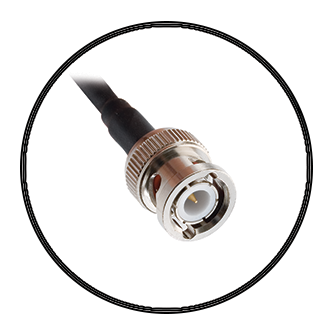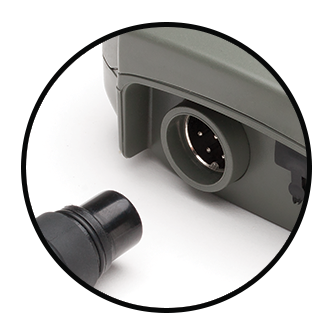Hanna Instruments offers a wide variety of electrodes that are designed for many different applications. The type sensing type, body material, type of junction, type of reference and electrolyte used are just some of the design considerations.
The HI36183 uses a platinum pin, glass body, single ceramic junction and is refillable with 3.5M KCl + AgCl.
Platinum Sensing Pin
The HI36183 ORP sensor is made with platinum. An ORP sensor must be chemically inert; it cannot be oxidized or reduced itself. It must also have the proper surface characteristics to promote rapid electron exchange, a property known as high exchange current density. Two noble metals have proven to work well for this purpose: pure platinum and pure gold are both used in the construction of ORP sensors. The platinum sensor is often preferred because it is mechanically simpler and safer to produce. Platinum can be welded to glass and has a similar thermal coefficient.
Glass Body
The glass body is ideal for laboratory use. The glass is resistant to many harsh chemicals and is easily cleaned. The glass body also allows for a fast transfer of heat to the internal reference electrolyte. The mV generated by the reference cell is temperature dependent. The faster the equilibrium the steadier the reference potential.
Single Ceramic Junction
The outer junction of an electrode, also known as a salt bridge, is necessary component of the electrical circuit. The movement of ions must flow through the junction for a steady reading. The outer reference has a single ceramic frit. The ceramic is a porous material that is easily fused with the glass body and has a similar expansion coefficient. A single ceramic junction has a flow rate of 15-20 μL/hour. Other junction types are available with higher flow rates and made with different materials.
Refillable
The HI36183 is a refillable probe. Since it is a single junction ORP electrode the fill solution is the HI7071 3.5M KCl + AgCl. If using a refillable ORP electrode, the fill cap should be removed prior to measurement. Removing the cap creates positive head pressure in the reference cell allowing for higher flow rate of electrolyte through the outer junction. A higher flow rate will result in a faster and more stable reading.
Quick Connect DIN Connector
The HI36183 uses a Quick Connect DIN connector that makes attaching and removing the probe simple and easy. This type of connector is proprietary to the meter. See specifications table for compatible meters.
All prices are inclusive of GST and not all items are stock items, if you require an immediate solution please send an email to sales@hannainst.com.au or call us on (03) 9769 0666.
Free standard delivery: We offer free delivery within Australia on orders over $100, typically arriving within 5 to 7 days. Delivery times may vary depending on the courier service and the recipient's location. Free shipping is not available with other offers or discounts.
Same-day despatch: Place your order before 1 PM Monday to Friday for same-day despatch. Delivery times may vary depending on the courier service and the recipient's location. Subject to stock availability.
Please note that we do not offer shipping to PO Box addresses.












